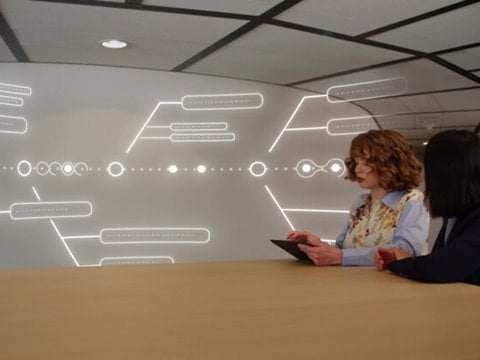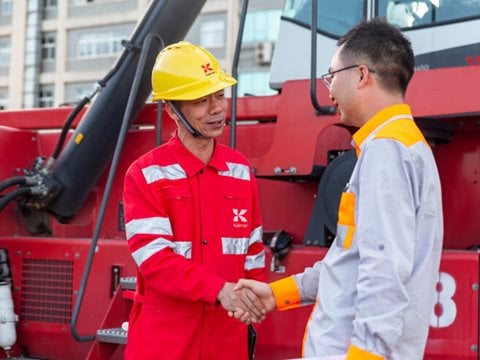
New simulator straddles virtual, real world operations
The technology behind the straddle carrier simulator recently delivered to a customer in South Africa has the potential to significantly improve the quality and safety of operator training for all Kalmar customers.
The simulator offers a similar user interface to the straddle carrier with authentic Kalmar controls and a ‘cave-type’ visualisation system with eight LED displays oriented downwards to replicate the actual view from the cab.
The trainer can activate a range of fault cases to help the operator learn how to respond to different scenarios. The training environment has been mapped to follow the actual environment at the customer’s site and includes the option to operate with ship-to-shore (STS) cranes and trucks as well as different container types.
Learning to operate without any risk
The simulator was developed by Jussi Rosenström, an R&D Engineer, Mechanics at Kalmar Horizontal Transportation, at Kalmar's Technology and Competence Centre in Tampere, Finland. There are several reasons why the ability to train operators on a simulator is appealing, observes Rosenström.
“Perhaps the most significant is that it is very efficient for drivers with no previous experience. With the simulator they are able to learn basic driving skills without risk of personal injury or the possibility of damaging the machine or containers,” he says.
By training operators on a simulator, the machines remain available for daily operation. Additionally, the set-up of the simulator enables training to be delivered to more than one person at a time. In safe straddle carrier operation the cabin can only accommodate one trainee operator and a trainer. With the simulator, multiple trainees can observe the session and hear the comments of the trainer (who has access to additional screens for close-up or full screen views of the simulated environment), thus accelerating their learning. The simulator can also be used for safe self-training when a trainer cannot be present.
 “Simulators are extensively used in our product development and formed the basis of this project with modifications to make the product more suitable for training purposes,” explains Rosenström. “Having worked with our existing simulator I understood the basics of the program used to build the simulation model and my colleagues at Tampere provided support on other elements of the project.”
“Simulators are extensively used in our product development and formed the basis of this project with modifications to make the product more suitable for training purposes,” explains Rosenström. “Having worked with our existing simulator I understood the basics of the program used to build the simulation model and my colleagues at Tampere provided support on other elements of the project.”
The Technology and Competence Centre in Tampere facilitates the development of energy-efficient, safe and intelligent machinery and automation solutions. It includes the industry's largest port automation test field and world class facilities and laboratories for software development, prototyping, simulation, testing, monitoring and optimisation.
The centre tests and demonstrates fully automated end-to-end container handling operations at the test field, speeding up product development and automation deployment in customer projects significantly. Automated solutions can be tested 24/7 with live equipment and via remote connection, even when the customer is located on the other side of the world.
The simulator delivered to South Africa was developed over a period of approximately six months. It supports the modelling of multiple operating scenarios, including handling of special containers (open top and twins) that require careful manoeuvring.
One of the most significant elements of the project is that the simulator can be adapted to the requirements of other Kalmar straddle carrier customers. Its compact physical structure is designed to be moved, allowing it to be used for training of service personnel at the container terminal.
“The HIL (hardware-in-the-loop) simulator includes actual customer-specific software to enable the user to become familiar with the customer-specific functions,” concludes Rosenström. “Once a new terminal layout is modelled in a suitable format for the simulation software, the operational environment can also be changed.”

The simulator was developed by Jussi Rosenström, an R&D Engineer, Mechanics at Kalmar Horizontal Transportation
Related articles
Further reading
Subscribe and receive updates in your email
Subscribe










